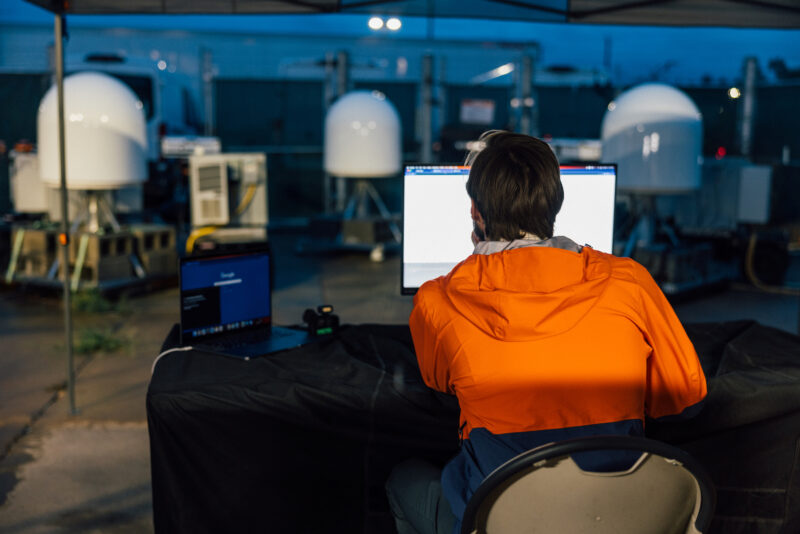Amazon’s Project Kuiper Demonstrates a 2-Way Video Call

Amazon tests the prototype satellites for its Project Kuiper network. Photo: Amazon
Amazon’s Project Kuiper takes a step forward after successful tests bring the constellation closer to a commercial reality. Amazon announced Thursday that Project Kuiper has validated all systems and subsystems on board its prototype satellites, and demonstrated the first two-way video call over Amazon’s end-to-end communications network.
This follows after ULA launched the first two prototype satellites in October.
These tests allowed Amazon to validate the architecture and design of its satellite constellation, and conduct demonstrations of 4K video streaming and two-way video calls over the network. With initial testing complete, Project Kuiper is on track to begin mass satellite production ahead of a full-scale deployment starting in the first half of 2024, before entering beta testing with select customers later in the year. When Amazon begin beta testing in the second half of next year, it will work with early partners like Vodafone and Verizon in these service pilots.
The most recent Protoflight tests involved the RF communications payload, which includes a combination of parabolic antennas, phased array antennas, and additional innovations that allowed Amazon to send customer data traffic across the network. Amazon said this was the last major satellite system it set out to prove in space, and through a series of experiments during the week of November 5, it said it successfully demonstrated end-to-end network functionality.
Amazon’s Protoflight mission has seen Amazon test the full range of hardware, software, and infrastructure that underpins its network. This includes the key systems and subsystems that allow its satellites to operate safely and reliably in space—satellite structures and mechanics, flight computers, propulsion systems, solar power generation and distribution systems, batteries, star trackers, reaction wheels, and more — as well as the RF communications payload it is using to send and receive data through the Kuiper network.
The mission has also allowed Amazon to validate technology and infrastructure on the ground, including prototypes of its customer terminal; telemetry, tracking and control (TT&C) stations located in places like Hawaii and Mauritius; its ground gateway station in Texas; and connection points to the terrestrial internet via Amazon Web Services (AWS).
“Kuiper was an idea on a piece of paper a few years ago, and everything we’ve learned so far from our Protoflight mission validates our original vision and architecture. We still have a lot of hard work ahead, and scaling for mass production won’t be easy. To get these results on your very first mission though—and so quickly after launch—is an incredible feat, and it’s only possible because of the expertise and dedication of our team here at Amazon,” Rajeev Badyal, vice president of technology for Project Kuiper, said in a statement.